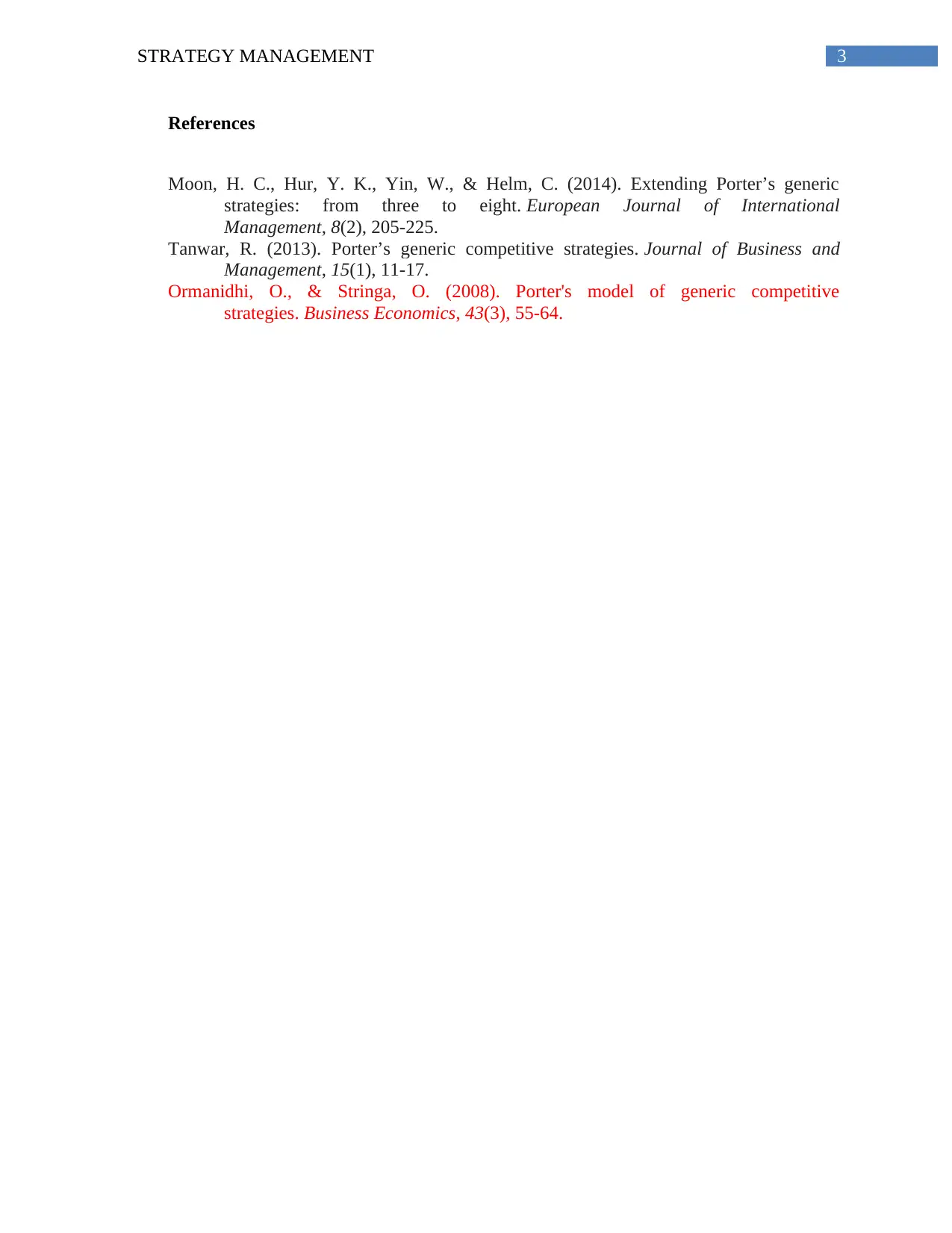Strategic Analysis: Applying Porter's Generic Strategies for E-mart
VerifiedAdded on 2019/11/20
|4
|569
|459
Report
AI Summary
This report analyzes Porter's generic competitive strategies, focusing on cost leadership, differentiation, and focus strategies. It begins by introducing Porter's model, which includes the five forces that shape the competitive environment. The report then examines how E-mart, a supermarket chain, applies these strategies to navigate its competitive landscape. The analysis considers the threats from new entrants, the intensity of rivalry, the availability of substitute products, and the bargaining power of suppliers and buyers. The report highlights E-mart's adoption of a cost leadership strategy to maintain its position in a highly competitive market. The conclusion emphasizes the importance of understanding and implementing these strategies for business success and survival. The report includes relevant references that support the analysis of Porter's strategies and E-mart's strategic choices.
1 out of 4










![[object Object]](/_next/static/media/star-bottom.7253800d.svg)